Eighteen-year-old Kia Hanson has always enjoyed her time as a youth leader at the East Oakland Youth Development Center (EOYDC). She’s worked mostly with five- and six-year-olds since she began in 2016. Recently, she tapped into new skills, especially if the kids were having a meltdown.
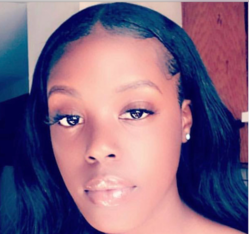
“If they’re off, we ask them, ‘What’s wrong?’ ‘Do you want to talk about anything?’,” she explains. “Basically asking before assuming they’re mad at the world for no reason.”
What made the difference? She learned how to respond to kids who’ve experienced trauma. The training provided by clinicians from the neighboring Youth UpRising also helped the youth leaders hurdle some of their own barriers.
“I had gone to counseling after my brother passed,” says Hanson. “Counseling didn’t work for me. I felt like maybe they want to be in my business,” she says. When she voiced her concerns, another youth leader invited her to reconsider.
“Somebody said they do counseling and it helped them. So I thought maybe I’d try it again,” she explains.
The training and collaboration between EOYDC and Youth UpRising was part of the Breakthrough Series Collaborative (BSC), an initiative started by the Institute for Health Care Improvement in 1995 and adapted in Baltimore in 2015. The Baltimore team provided technical assistance for the BSC Oakland. (For a list of faculty, please see the attached document.) The initiative addresses racial equity and justice; ACEs science, including how to build resilience; and how an environment supports its workforce by creating safe spaces. The overall goal of the project was not for organizations to attend just more trainings, but to move beyond thinking and talking to action.
And to ensure that the work is sustainable, it encourages organizations to test out strategies. (See attached document detailing the self-inquiry exercises done at the beginning of the BSC.)
The BSC Oakland, which began in May 2018, includes the EOYDC, which provides classes and leadership training for youth; Youth UpRising, which uses health, wellness, educational, career, arts and cultural programming to disrupt the cycle of poverty and violence; Youth Homes, a group devoted to helping traumatized and foster youth; the East Bay Agency for Children, which offers safety-net services and training to families and children as well as trauma-informed training to workforces through its program Trauma Transformed; and a behavioral health team from UCSF Benioff Children’s Hospital.
Approximately 30 people from the five organizations met three times for two-day workshops last year, and had several conference calls in between. Each organization had taken a deep look internally to identify how they could be more sensitive to their own workforce’s trauma, and how they could further build resilience and learn from one another.
The BSC team met in March at the Oakland-based office of Trauma Transformed for its final meeting at which each organization presented to one another how their projects unfolded and where they are now.
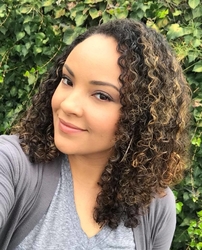
EOYDC trains its older youth to work with younger youth. It’s based in East Oakland, a community plagued by violence, says Selena Wilson, EOYDC vice president of organizational effectiveness, and points to a map illustrating the point.
“If you look at the stressor ranking in terms of violent crimes,” Wilson tells other BSC members, “we are high ranking. This is as stressed out as you can get in terms of exposure to those things.”
On the map, the East Oakland area they serve is identified as having the highest stressor ranking out of 57 community police beats in Oakland. The map, a project of the Urban Strategies Council of Oakland, ranked community stressor levels based on how much violence or risk of violence exists in each community.

The youth leaders bring these experiences with them, and then have to work with younger children who also have experienced trauma, adds Landon Hil, senior manager of program effectiveness.“And then you have a six-year old, who doesn’t listen to you, runs down the hall, gets upset and throws a tantrum.”
Listening was also the strategy that Youth UpRising deployed for their BSC project. After hearing from youth who said they felt they weren’t being heard, says Shawana Booker, Youth UprRising’s director of health and wellness, the kids were asked to write answers on Post-It notes to questions written on a board. One question was: What do adults get wrong all the time?
Booker reads the responses: “’They don't care about our mental stability and they know they affect it.’ ‘They assume they know everything because they’ve been our age before.’ ‘The difference between feelings and feeeeelings.’” The room fills with laughter.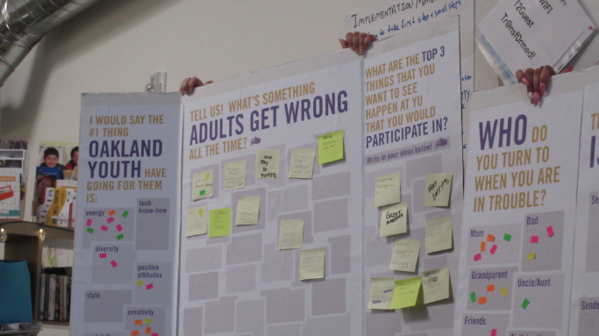
“’That we will be like them,’” she continues. “So this was good — it helped us be a trauma-informed healing space by checking ourselves.”
And the response to another question posed on the boards, “Who do you turn to when you’re in trouble?” gave Youth UpRising a teachable moment that’s turning into a project.
“Many of the youth answered ‘boyfriend’ or ‘girlfriend’,” she explains. “So we’re going to move towards having education about intimate partner violence and domestic violence, because if they’re leaning on their peers more, we want to create the peer-to-peer understanding of abuse and trauma.”
As another way of making sure that the youth voice is front and center in their work, Youth Uprising created a youth advisory board. It’s in line with a key concept of BSC and other grassroots empowerment initiatives —“For us, by us”.
“So the youth voice is not a side thing, but it’s built into our infrastructure,” Booker says.
The members of a behavioral health team from UCSF Benioff Children’s Hospital told their peers that many employees who had worked in the same building were now working in different and unfamiliar offices. That and a change in leadership had taken a toll on staff morale.
”The goal was to increase feelings of connections and support, and a big thing was to develop an environment of gratitude and acknowledgment of one another,” says one of the presenters.
Their solution? It was to rev up a practice introduced by a previous program called “Caring on the Spot.” It involves employees praising other employees. To do that staff members fill out a three-part form, which asks: “Who are you recognizing and why?” The top part of the form goes to the person they’re recognizing. The yellow one is posted on a board mounted on the wall. And the pink one goes to their manager and to human resources.
At each staff meeting the forms are passed out. They’ve developed a ritual to finish each staff meeting by reading out some of the filled out forms, according to one of the presenters. While the metrics on how it’s working have not been analyzed, anecdotally the team said there’s been a positive response.
“It’s bringing people together in gratitude and some people liked that it was being tracked by human resources, because some people felt like the work that we do was not visible to anyone outside the department,” says one staff member.
To make a waiting area more welcoming, members of the team from the East Bay Agency for Children showed the “before” and “after” photos from a family resource center it operates with Oakland Unified School District.
Tools provided to help the participating organizations look inward included thinking about whether the work environment feels safe and inclusive. After their analysis, Youth Homes realized they had their work cut out for them. And it had to do with race.
One presenter from Youth Homes described her experience of entering the main office on the occasions she went there for training or to meet with the organization’s leadership.
“It was an uneasy and unwelcoming feeling, because there was nothing relatable to myself and it was uncomfortable to go in there or communicate or have to work with people at the office,” she says, and noted that other African American workers felt the same.
The reason for that feeling was clear. “The leadership and executive leadership had been white for 50 years. This didn't change until July 2018,” notes Tara Ignont, the clinical director of Youth Home’s Resource Family Program, adding that only one African American had been working in the main office.
What did Youth Homes do? It hired six new African American employees working in executive leadership, program management and administrative positions in the main office. It also asked employees to help make the environment more welcoming. The result was a wall celebrating historic African American figures, including President Barack Obama, Rosa Parks, Frederick Douglas, Harriet Tubman and Oprah Winfrey.
“So that’s changed the office. And the board…as soon as you walk in the office it grabs your attention and it's a different feeling,” says the employee who had previously described the atmosphere as unwelcoming. The organization has also started a “Black Leadership Network,” says Ignont, whose work will include providing a “safe and healing space for all staff.” It will also serve as an advisory group for the executive leadership team.
On the question of healing, EOYDC’s Hanson, who participated in the youth leadership training provided by Youth Uprising, says that when some of her peers said they didn’t feel like breathing exercises helped them when they were triggered, she made another suggestion.
“I said music helps me calm down,” and listed a few of her favorite Hip Hop artists: Chris Brown, Tevin Campbell and the band, 112.
EOYDC is hoping that its collaboration on this workshop project will continue through the school year and potentially over the summer, says Wilson.
“We all benefit from working collaboratively, sharing our collective wisdom and building positive and trusting relationships,” says Francesca Osuna, the TIS implementation and evaluation coordinator with Trauma Transformed, which coordinated the BSC Oakland project.

“While change can feel overwhelming amidst all of our daily tasks,” she says, “we can still make meaningful changes by taking small steps and working together.”

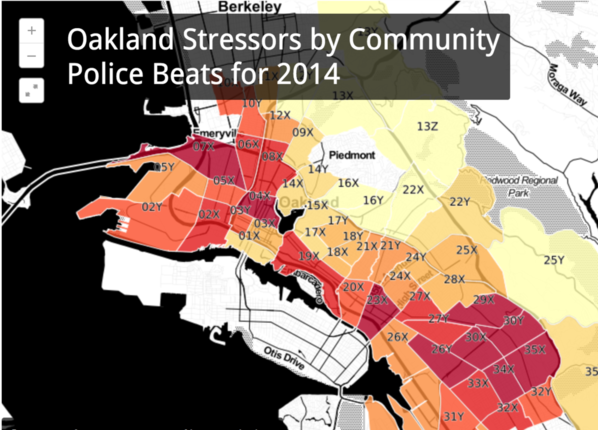
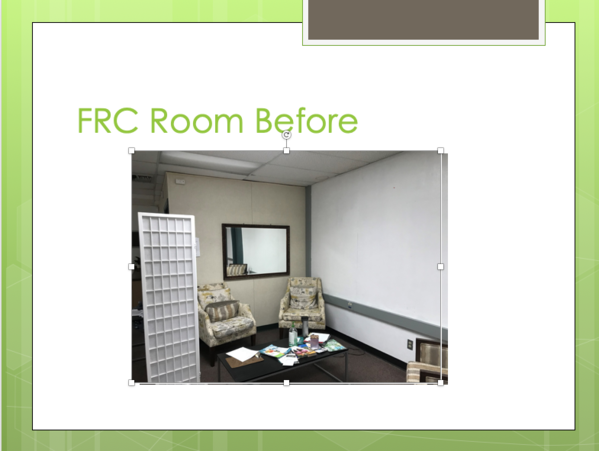

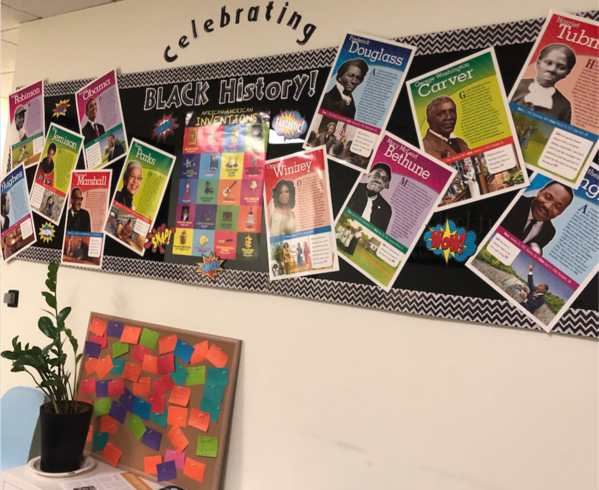


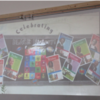







Comments (0)